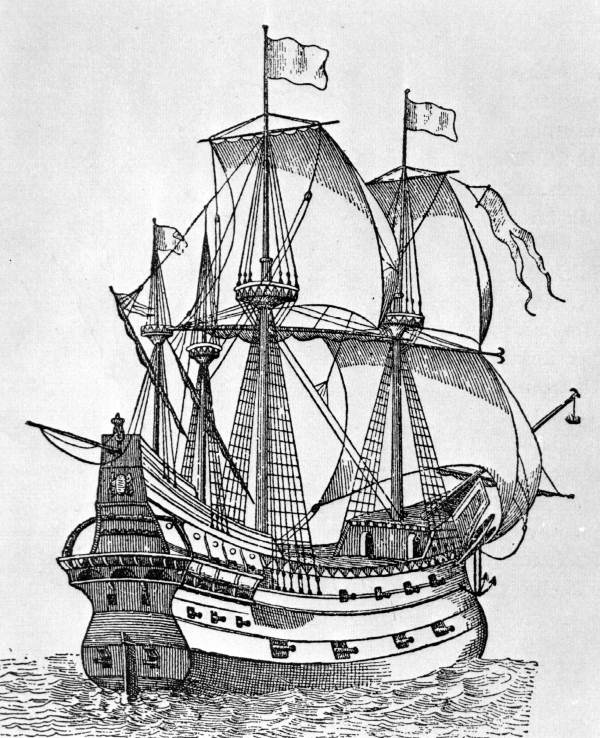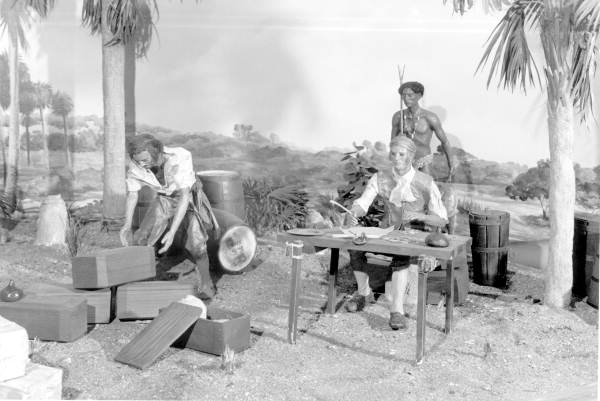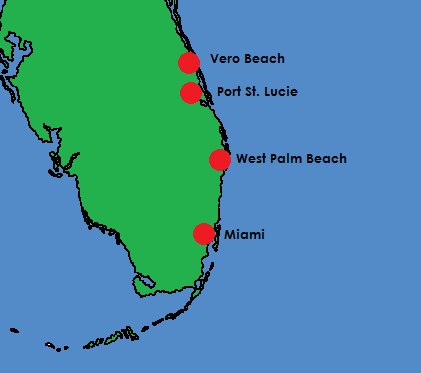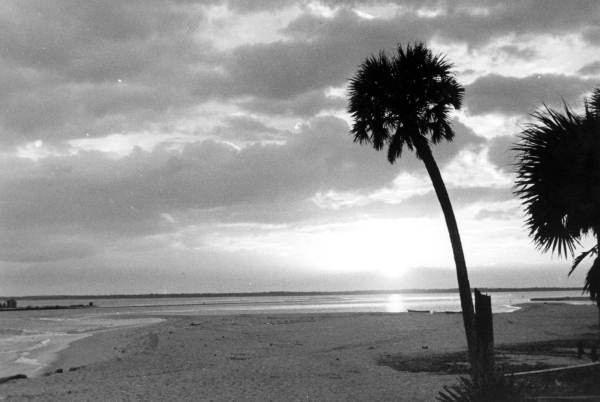Description of previous item
Description of next item
Why We Treasure the Treasure Coast
Published December 12, 2014 by Florida Memory
The Treasure Coast is a section of Florida’s Atlantic coastline located roughly between Vero Beach and Miami. Locals could point to lots of reasons why this part of Florida deserves to be “treasured,” but which treasure earned it the name? The miles of white sandy beaches? The once-prominent and lucrative pineapple industry in the area?
It turns out the name “Treasure Coast” is much more literal. Nearly 300 years ago, in 1715, a fleet of 11 Spanish ships was wrecked just offshore between the mouth of the St. Lucie River and Cape Canaveral.
These weren’t just any ships. They were part of what the Spanish called a plate fleet, sent to collect new wealth from the American possessions of the Spanish Empire and transport it to Spain. When they fell victim to the punishing winds of a hurricane, all but one of the ships sank, scattering their valuable cargo over the seafloor.
This plate fleet was especially rich, owing to the circumstances of the time. From 1700 to 1714, most of Western Europe was tangled up in a war over who would succeed to the throne of Spain. Plate fleets usually sailed from the Spanish port of Cadiz each year, but the intense European conflict made it too dangerous to make the journey. Once the war was settled, however, the Spanish made plans to collect much needed revenue from their American colonies. The fleet split once it reached the New World, some of the ships heading to Veracruz in New Spain, and others traveling farther south to Cartagena and Portobello. By the time the ships were reunited at Havana, they were loaded down with gold, silver, jewels, and trade items obtained from China.

Drawing of a typical Spanish galleon, similar to those that would have been part of the Plate Fleet of 1715 (1886).
The final leg of the trip back to Spain always carried the plate fleet up the Gulf Stream between the Bahamas and the Florida coast. This was a dangerous gamble, because if the ships encountered rough weather, it could push them against the shallower waters along the Florida coast, which concealed a number of reefs that could easily destroy the wooden hull of a ship. Oddly enough, most plate fleet sailings seemed to take place in the midst of hurricane season.
The 1715 plate fleet set sail from Havana on July 24th, caught the Gulf Stream, and began navigating northward. On the 30th, the fleet passed the mouth of the Bahama Channel, where the weather began to turn foul. By the early morning of July 31st, the ships were caught up in the brunt of an Atlantic hurricane, tossed about with no way to steer or resist the massive waves crashing onto their decks. Two ships, La Francesca and San Miguel, disappeared completely, while the others were crushed as the high winds pushed them into the shallow waters off Cape Canavaeral. The death toll is difficult to estimate; one historian has suggested that as many as a thousand may have died in this single incident.

A diorama depicting the activities of the survivors of the 1715 Plate Fleet wreck. The display is located at the McLarty State Museum in the Sebastian Inlet State Recreational Area (circa 1970s).
Those who did survive made it to the Florida coast and began gathering wood and supplies from the wreckage to erect a camp. The admiral of the fleet, Don Francisco Salmon, sent a small detachment north to St. Augustine to report the disaster to Spanish authorities there. He ordered a boat constructed so that another detachment could go south to Havana for the same purpose. The situation for all involved was grim; survivors reported eating dogs, cats, horses, and even palmetto berries.
The Spanish attempted to recover their lost horde, but could only do so much, as the constant movement of the sea continued to break apart the ships of the plate fleet and scatter their contents. As word of the disaster spread, small vessels came from far and wide to pilfer and recover what small bits of the great treasure they could locate. Generations later, people still occasionally come across coins or other artifacts. When a 1955 hurricane blew away a portion of the sand dunes near Sebastian Inlet and exposed significant evidence of the shipwrecks, treasure hunters began looking for the wreck sites with renewed interest. Local resident Kip Wagner took up the search as a hobby, and eventually formed a company that found two of the fleet vessels and a wealth of artifacts.
With all the treasure being found in the area, local newspapermen John J. Schumann, Jr. and Harry J. Schultz thought it might make for a good nickname for the region. Florida’s Atlantic coast was already lined with towns by this time, and it could be difficult for any one of them to convey to visitors exactly what made them special. Schultz and Schumann decided that since they had a Space Coast to their north and a Gold Coast to their south, it made perfect sense to turn Kip Wagner’s recent find into a publicity generator and call their area the “Treasure Coast.”
What is your favorite part of the Florida coast to visit? Let us know by sharing this article on Facebook! Also, search the Florida Photographic Collection for more photos of incredible treasures discovered in the waters of the Sunshine State.
Cite This Article
Chicago Manual of Style
(17th Edition)Florida Memory. "Why We Treasure the Treasure Coast." Floridiana, 2014. https://www.floridamemory.com/items/show/295242.
MLA
(9th Edition)Florida Memory. "Why We Treasure the Treasure Coast." Floridiana, 2014, https://www.floridamemory.com/items/show/295242. Accessed December 16, 2025.
APA
(7th Edition)Florida Memory. (2014, December 12). Why We Treasure the Treasure Coast. Floridiana. Retrieved from https://www.floridamemory.com/items/show/295242

 Listen: The Blues Program
Listen: The Blues Program
